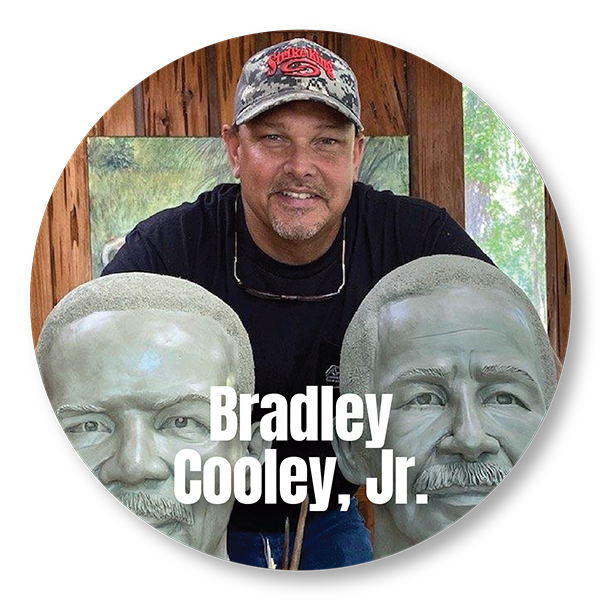The History and Culture Trail is a continuation of the City of Tallahassee’s commitment to residents as part of its investment in the development of FAMU Way, which included ample research and documentation to memorialize and celebrate the area’s history. This project uncovers and celebrates the underrepresented history of the neighborhoods, businesses, and people living in the areas surrounding the Capital Cascades Trail at FAMU Way. The project includes three components: 1) Historical Monuments 2) Public Art Installations, and 3) a new Community Gathering Space. The historical monuments display images and historical information about the contributions and cultural impact of the economic engines, community activists, and everyday people who lived in the communities highlighted. A dozen site-specific public art installations will complement the monuments and further reflect this area’s rich history. The new Community Gathering Space is a passive plaza that overlooks the stormwater pond near Lake Bradford Road. The plaza features hand-carved wood sculptures repurposed from live oak wood. The Trail will provide educational opportunities and one-of-a-kind interactions to increase awareness of a culturally rich corridor. The historical monuments and public art open a window into the experience of generations who have called the area home.
Public Art Projects

The project covers six subject areas:
Theme 1: Allen Subdivision
Theme 2: FAMU History & Civil Rights
Theme 3: Villa Mitchell Hill & Economic Engines
Theme 4: Boynton Still & Economic Engines
Theme 5: Railroad Depot & Community
Theme 6: Elberta Crate Factory
Project Manager: Tatiana M. Daguillard


Public Art
Seven artists have been commissioned to craft 12 new artworks for the Trail. Each piece is site-specific and will help tell the story of the area it occupies. The murals and sculptures enhance the vibrant cultural landscape of the corridor and create new opportunities for engagement. Learn more about the seven artists selected for the History & Culture Trail, the artworks they created, and their creative process:
Alisha Lewis

Alisha Lewis, “For the Generations to Fulfill the Dream” Sculpture
Alisha Lewis is a native of Jacksonville, Florida. She majored in ceramics at the University of Florida and minored in art history and Black American studies. Lewis is also a graduate of the Maryland Institute College of Art in Baltimore with a Master of Professional Studies in the Business of Art and Design. Lewis is the founder of Brown Girls Unite, a platform for empowerment via art and art education.
Florida A&M University’s (FAMU) role in the local and national Civil Rights Movement inspired Alisha’s artwork. Since its establishment in 1887, FAMU has played a prominent role as an institution of higher learning and a keystone of community activism. Lewis’ life-size sculpture pays homage to the women of FAMU who played a leading role in sit-ins, bus boycotts and marches throughout the Civil Rights era. The campaign against racial segregation and discrimination was actively fought by FAMU students and faculty. To compose the sculpture, Lewis referenced archival photographs including historic images of protests at the Florida Theatre (Tallahassee, FL).
To see more of Lewis’ work, visit alewisarts.com.




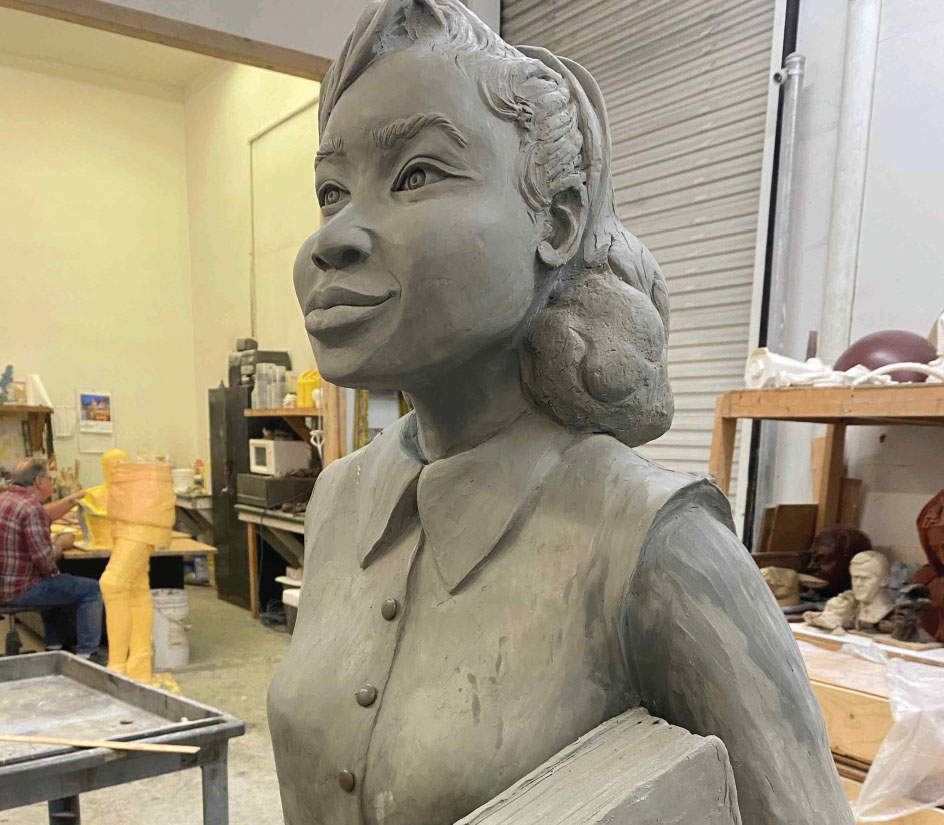
Bradley Cooley, Jr.

Bradley Cooley, Jr., “The Jazz Man” Sculpture
As a teenager, Bradley Cooley Jr. began creating sculptures with his father. The father and son team from Jefferson County, Florida, produced more than 40 life-size, lifelike bronze sculptures in their studio, including Otis Redding, Bobby Bowden, Ray Charles and members of the Seminole Tribe. Bradley is among the most well-known sculptors in the Southeast thanks to his intrinsic talent and generational expertise.
Bradley’s life-size bronze sculpture titled “The Jazz Man” honors the rich musical history of Tallahassee and pays tribute to local jazz legends like Nat and Julian “Cannonball” Adderley. Symbolizing this musical connection, the sculpture depicts an ageless jazz musician holding an instrument in a playing position, ready to channel music for decades to come. Residents near FAMU Way fondly remember enjoying musical acts at the Ship Ahoy, Savoy Club, Peppermint Patio, Hillside Fountainette, and The Harrison Inn for entertainment.
Today, notable Tallahassee-based jazz artists include Marcus Roberts, Scotty Barnhart, Longineu Parsons, Leon Anderson, and many more.
To see more of Cooley Jr.’s work, visit bronzesbycooley.com.





Joe Cowdrey



Joseph Cowdrey, “A Stroll Down Seaboard Street” Mural
Joe creates paintings and public murals that transport the viewer directly into the scene, immersing them in the environment. He hopes those who engage with his work can share his appreciation for the places he memorializes. Cowdrey earned an Associate of Arts degree from Tallahassee Community College, and though he’s no longer a Tallahassee resident, he is quick to emphasize “Florida is my home. New Jersey is where I currently live.”
The Railroad Depot connected Tallahassee to markets across the United States, spurring economic and residential development in the area. The railway also created divisions between neighborhoods, fostering distinct areas like Seaboard and Stearns-Mosley.
To see more of Cowdrey’s work, visit joecowdreyart.bigcartel.com.
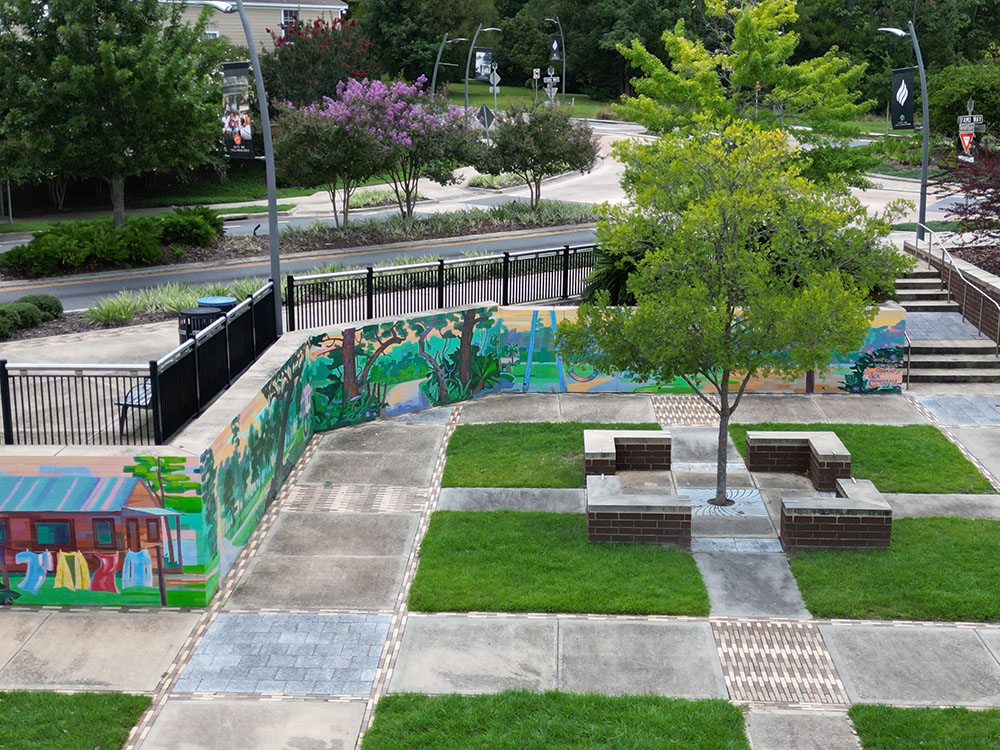




John Birch

John Birch, “Community, Your Move, and Metamorphosis” Wood Sculptures
John Birch is a self-trained Tallahassee sculptor who was introduced to wood and power tools by his father, a general contractor. John wields a chainsaw to coax organic forms and figures out of the remnants of previously standing trees. Navigating the grain of the wood and its natural imperfections, John works intuitively, paying close attention to what the wood will allow. Using a subtractive process, John removes everything that isn’t part of the sculpture to reveal the image inside. Numerous examples of John’s work can be seen throughout the community, in schools, churches and among private citizens.
The “Community” centerpiece sculpture stands 9 feet tall and captures the spirit of Boynton Still Quarters as portrayed in three scenes of community life. Complementing this stunning feature is “Your Move,” a bench carved as two enveloping hands with a game board between the two seats. Birch’s third piece is “Metamorphosis,” a chair in the shape of an outstretched hand supporting a monarch butterfly. Each piece provides a functionally engaging and reflective experience to users.
To see more of Birch’s work, visit facebook.com/sculpturesbyjohnbirch.





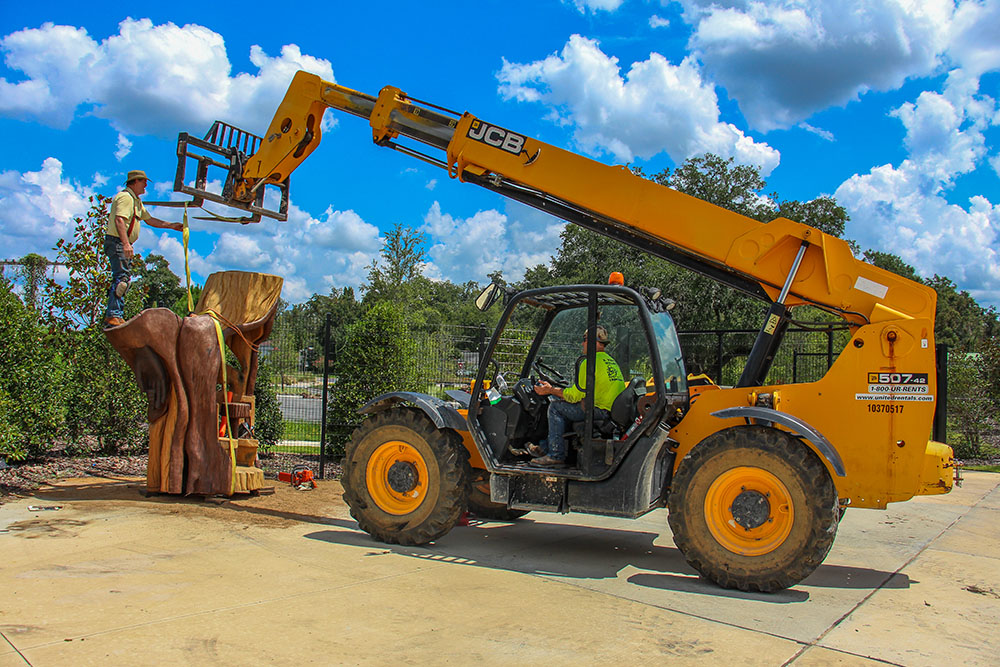
Julia Sinelnikova

Check back for more updates.
Julia’s work will be displayed upon installation.
Julia Sinelnikova, “Dream Waves” Sculptures
Focused on public works and immersive experiences, Julia Sinelnikova is a New York City-based artist who strives to transform physical space through light. Sinelnikova specializes in light-reactive sculptures and has been commissioned by many, including the Contemporary Art Museum of Houston and the City of New York. In addition to their practice as an internationally touring artist, Sinelnikova is passionate about bridging and healing local communities through art. They hold an MFA in sculpture from Queens College, New York and a BFA in sculpture from the Fashion Institute of Technology, New York.
Sinelnikova’s trio of sculptures commemorate Villa Mitchell Hill, a 200+ acre suburb built in 1887, now a subdivision within the Greater Bond community. Collectively titled “Dream Waves,” the trio of artworks ranges in size from 8’ – 14’ tall. A prominent community marker in Villa Mitchell Hill was the Coal Chute Bridge, which allowed for connectivity and interactivity for residents from both sides of the rail line. The bridge facilitated access to community, education, and entrepreneurship, “Dream Waves” symbolically represent this feature by incorporating themes of light, water, movement, and healing transformation. The cocoon-like design brings an interactive element to the pieces, complementing the hammock garden at Coal Chute Park.
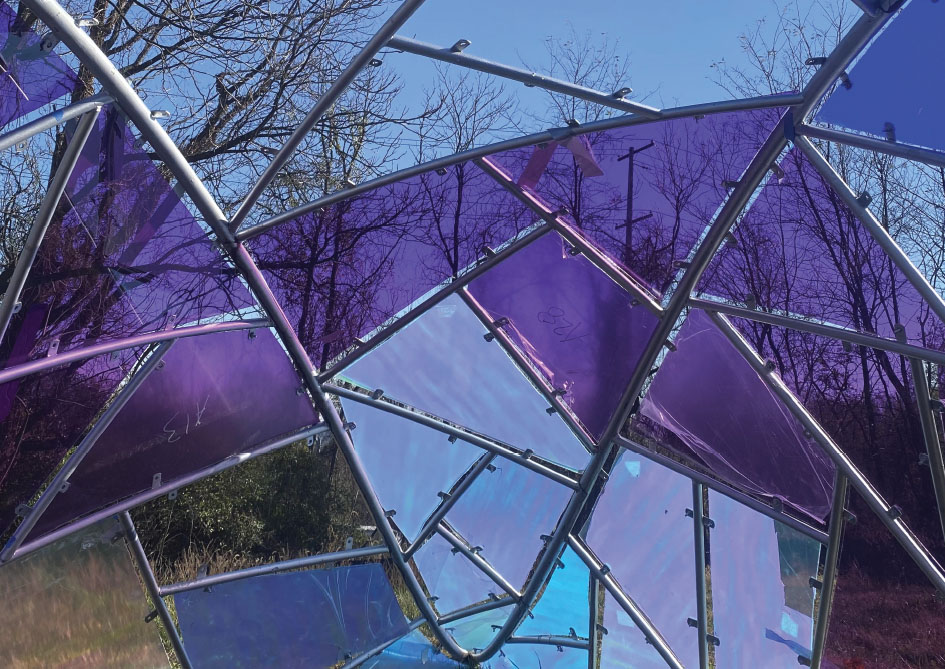
Mark Dickson

Mark Dickson, “In Honor of the Worker” Sculpture
Mark Dickson starts with concepts like form, negative space, and abstract suggestion. Dickson draws on his knowledge from independent studies in metal, design, fabrication, casting, foundry methods and blacksmithing. Dickson’s work is exhibited throughout the nation. His work appears modern but represents artifacts honoring the past.
Dickson’s 15-foot-tall aluminum sculpture titled “In Honor of the Worker” pays homage to the workers of the Elberta Crate & Box Company, which opened a factory in Tallahassee in 1922.
The sculpture is located near the old factory site near the new St. Marks Trailhead.
To see more of Dickson’s work, visit markdicksonstudios.com.


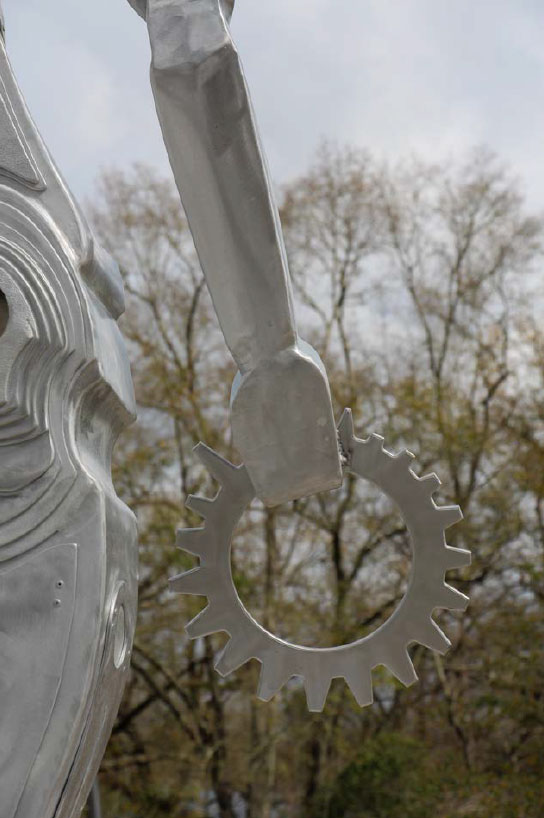


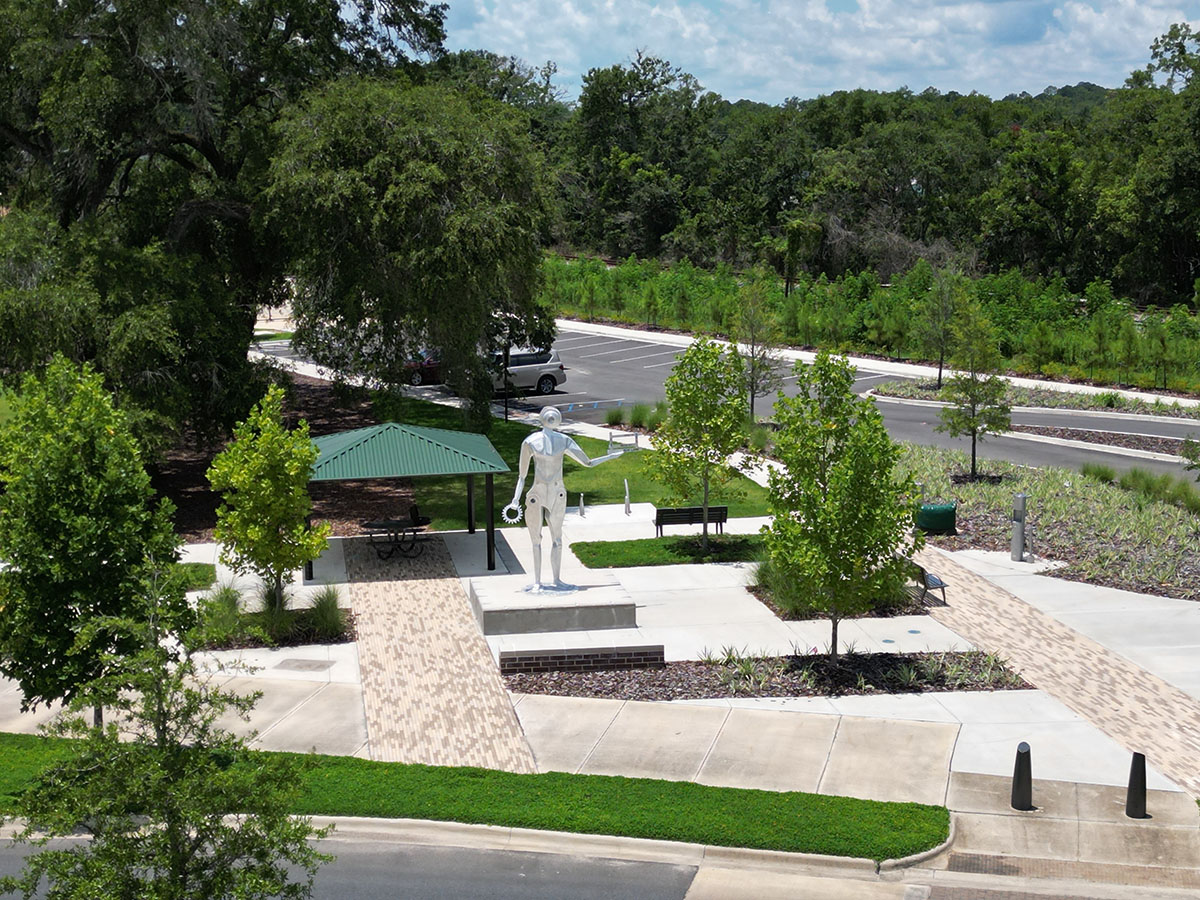
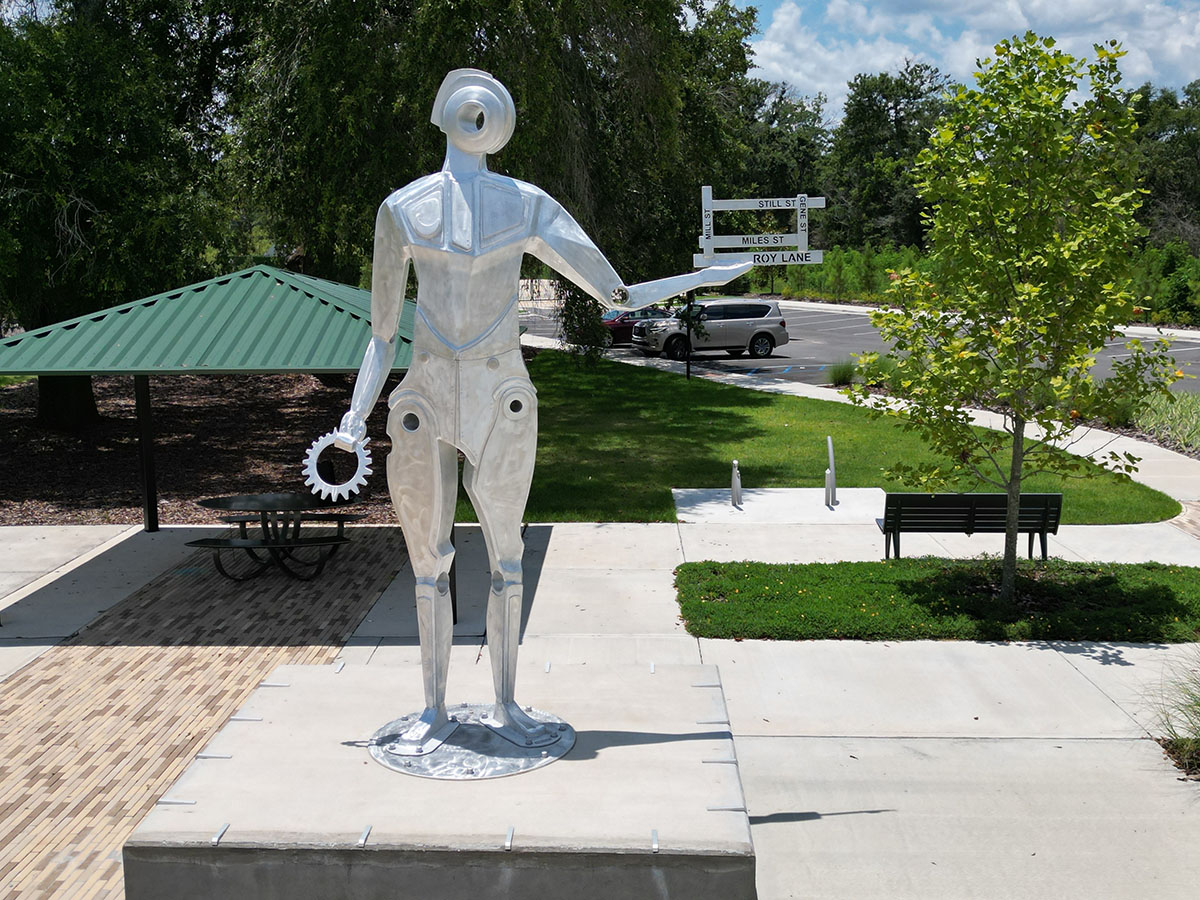
Yasaman Mehrsa

Yasaman Mehrsa, “We Are All One” Murals
Yasaman Mehrsa is a Toronto-based visual artist who works in both digital and traditional media. Born and raised in Iran, Mehrsa has been devoted to art from an early age. She earned a degree in Visual Communication & Graphic Design in Iran and a degree in Visual Arts in Canada. She has become an active muralist, completing projects for numerous organizations and communities across Canada. She strives to inspire viewers to look more carefully at the world around them and discover beauty in unusual places. Through her murals, Mehrsa immerses the viewer into a fantasy, encouraging them to wonder and explore their relationship with their surroundings.
The murals capture the remarkable spirit of the Allen community through color and symbolism. Inspired by the neighborhood’s history and a quote from Betty Pittman, an “Allenite,” Mehrsa created a vibrant visual representation of the Allen community’s past, present, and future. Facing each other, the artworks serve as the eastern gateway to FAMU Way and the History and Culture Trail. The murals have been installed on the M.S. Thomas Bridge at Anita R. Favors Plaza.
To see more of Mehrsa’s work, visit yasamanmehrsa.com.
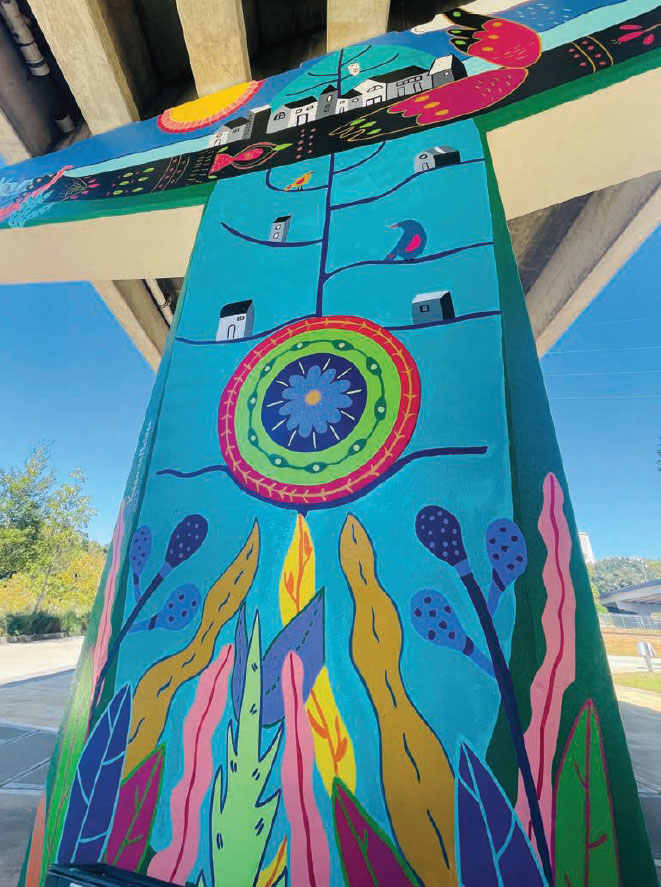

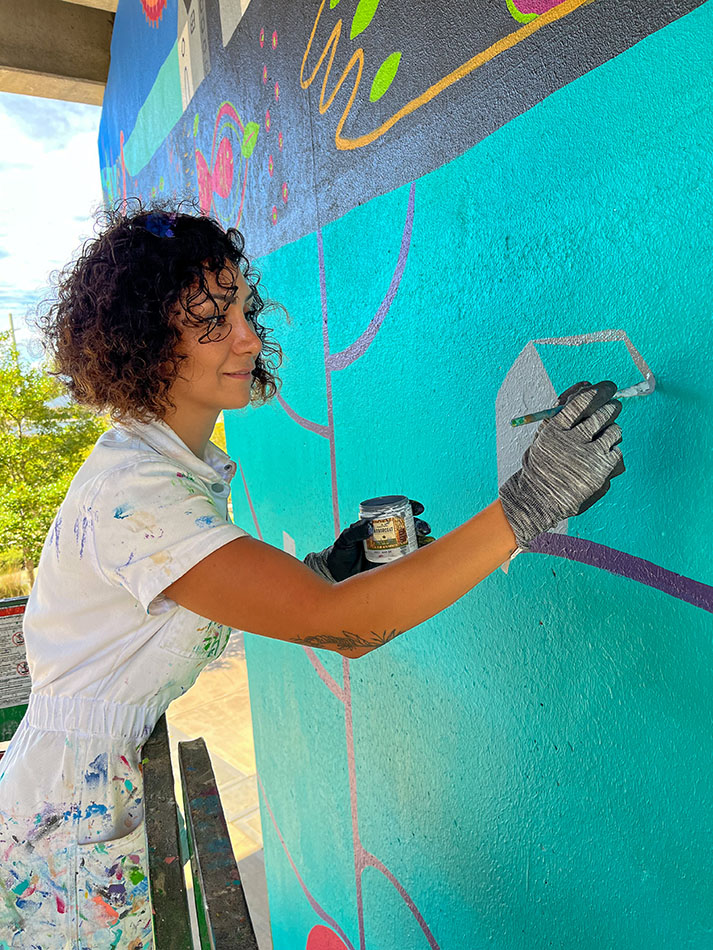


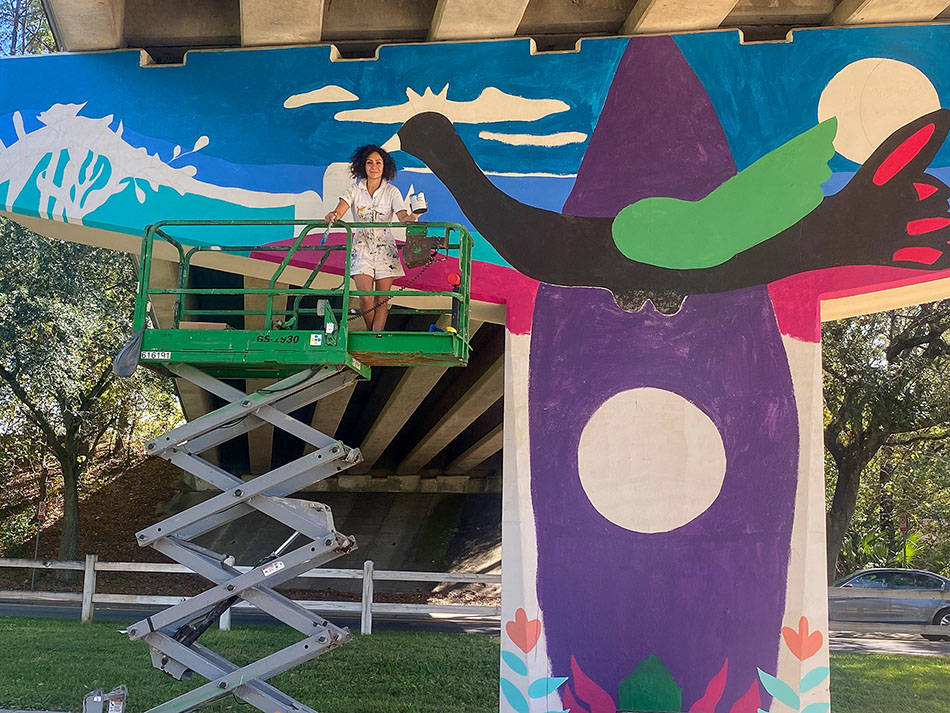
Community Engagement – Artful Celebration Video









